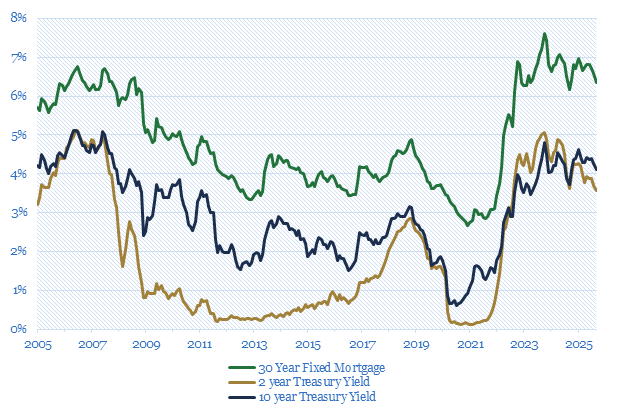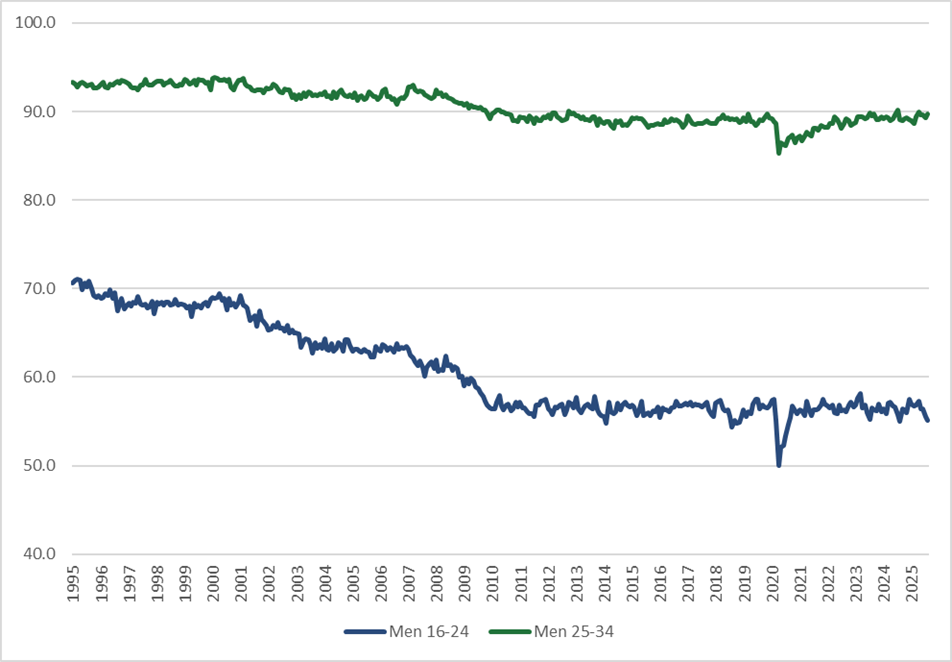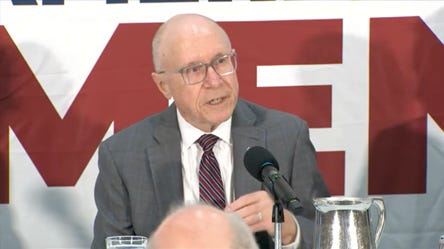Weekly Lab Report – November 12, 2025
Housing Affordability and the Plight of Young Men
Fiscal Lab Notes is the official Substack page for the Fiscal Lab on Capitol Hill. You can check out all our work and analyses at fiscallab.org.
The longest federal government shutdown (or more accurately, slowdown in activity) appears to be coming to an end as eight Senate Democrats voted with Republicans for a funding bill. The deal, which has the support of President Trump, is now with the House and could pass today.
Profligate Fiscal Policy Has Made Housing Unaffordable
While the government has slowed down, the Fiscal Lab has not. Joseph McCormack has a new brief on America’s housing unaffordability problem, which harms young people in particular. While restrictive land-use policies, including zoning rules, minimum lot sizes, and parking minimums, constrain housing supply, persistent federal deficits have fueled excess aggregate demand in the economy. Out-of-control spending contributes to inflation, which affects the price of housing along with everything else and, in turn, causes interest rates to rise, making housing even more expensive.
As McCormack points out, mortgage rates have surged alongside Treasury yields since 2021 and remain elevated to their pre-pandemic patterns (Figure 1). To ameliorate high borrowing costs and inflation, Congress will need to rein in its spending.
Figure 1. 30-year fixed mortgage rates versus 2 and 10-year Treasury yields
Citation: 30-Year Fixed Rate Mortgage Average in the United States | FRED | St. Louis Fed
Market Yield on U.S. Treasury Securities at 10-Year Constant Maturity | FRED | St. Louis Fed
Market Yield on U.S. Treasury Securities at 2-Year Constant Maturity | FRED | St. Louis Fed
The Symposium on Young American Men
Young men’s problems do not stop with housing. If you are a male between the ages of 16 and 24, you are likely participating in the labor force at the lowest rate since modern recordkeeping began. Roughly half of men in this age interval are neither working nor looking for work, even after adjusting for those men in the military and in penal and health facilities. The chart below shows the dramatic drop from 70 to 55 percent participation in the labor force between 1995 and 2025 (Figure 2).
Figure 2. Labor force participation rates for males ages 16–34
Source: Bureau of Labor Statistics
This declining participation rate is just one indicator of challenges facing this cohort. From increasing incidence of depression to growing interaction with the criminal justice system, today’s young men are deeply troubled. For example, 48 percent of Gen Z males report having two or fewer friends, and 11 percent report no friends at all, according to a poll conducted by Cygnal. About 50 percent spend six hours or more a day online in gaming, browsing, streaming, and social media activity. The poll found that 40 percent of young males do not have any male mentors.
This crisis was the subject of a day-long conference on young American men organized by the Lafayette Company and held at the National Press Club in Washington on November 3, 2025. Here is a link to the panel where Bill Beach presented the economic and statistical side of this national challenge.
Going Forward
The Fiscal Lab continues to score dozens of pieces of proposed legislation, which move the United States in a fiscally sound direction. Also, in the coming weeks, be on the lookout for Fiscal Lab primers and briefs on economic models, the fiscal multiplier, and other topics as well as a comprehensive glossary with budgetary and economic terminology.





